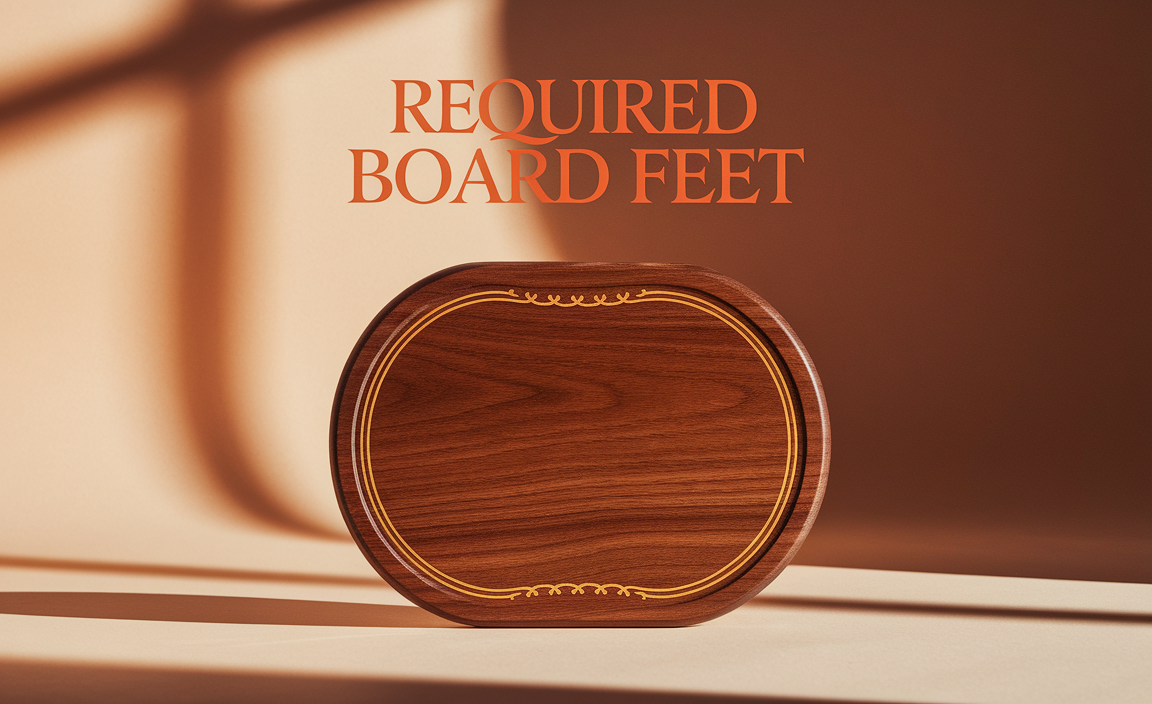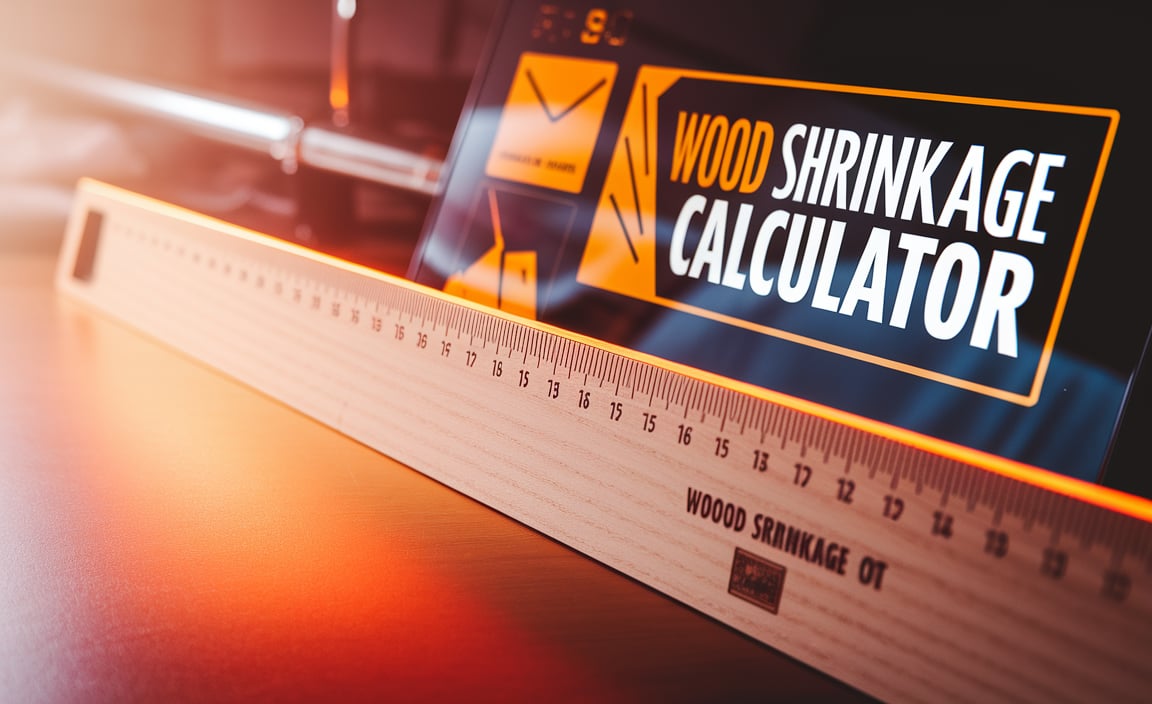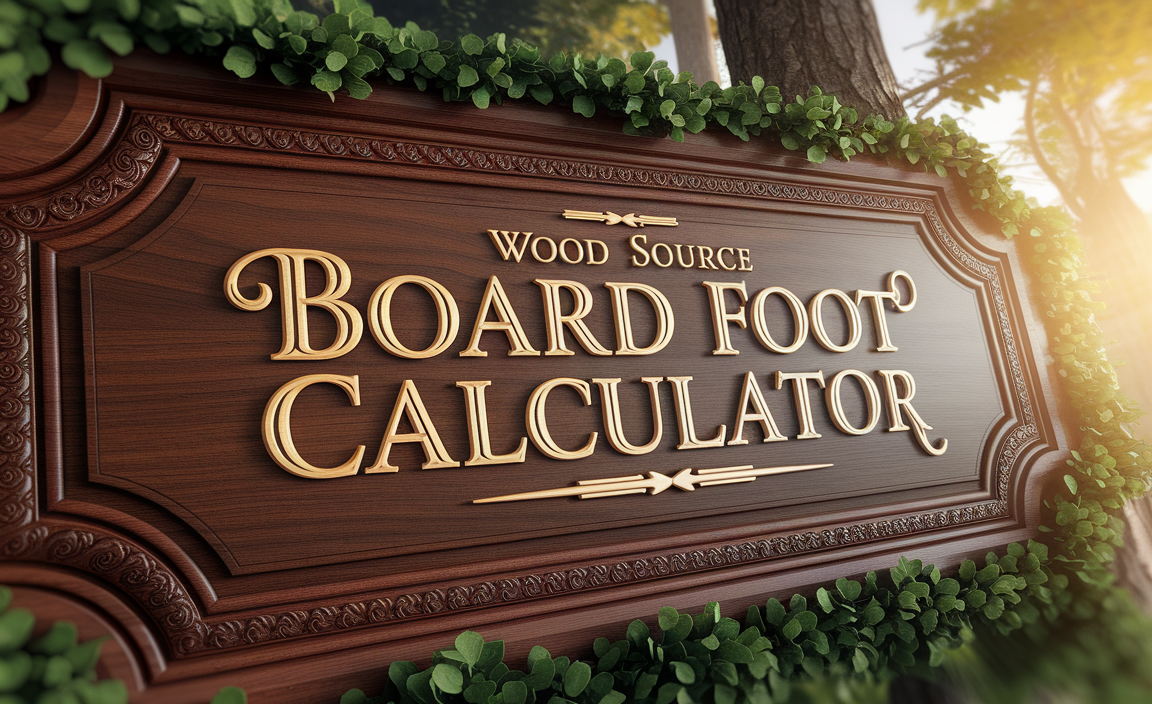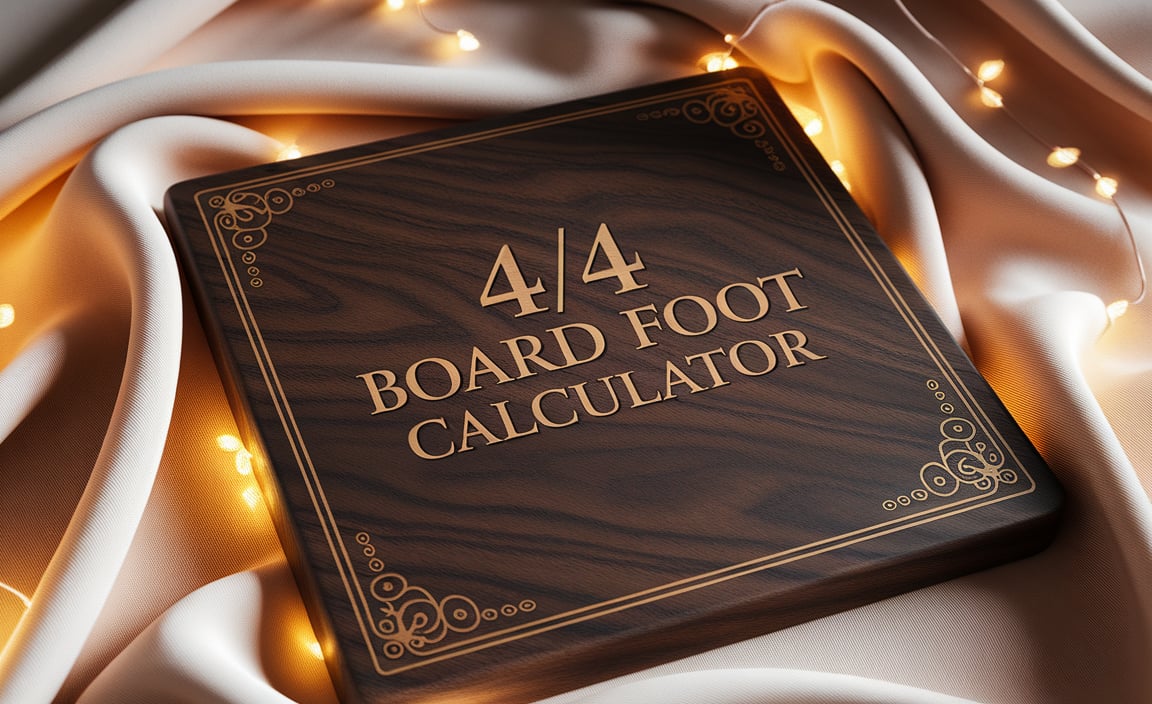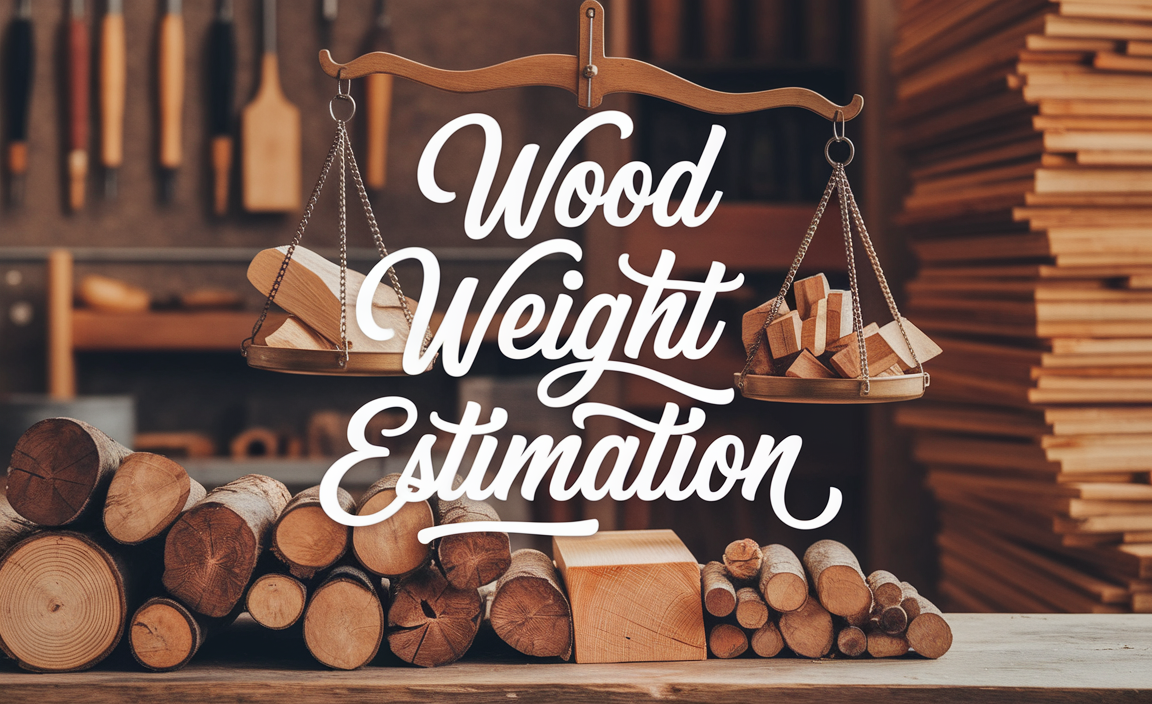Have you ever wondered how to figure out how much a piece of wood weighs? It can seem tricky at first. But, calculating wood weight is actually pretty simple. Imagine you’re at a lumberyard, picking out wood for your next project. You want to know how heavy those boards are before you buy them. Knowing the weight helps you decide if they are right for you.
Here’s a fun fact: Different types of wood weigh different amounts! Some woods are light, like pine, while others, like oak, can be quite heavy. This variation can surprise many people. So, how do you calculate wood weight in a way that is easy to understand?
In this article, we will break down the steps for you. You’ll learn how to measure wood and use simple formulas to get the weight. By the end, you’ll feel confident about calculating wood weight for any project. Ready to dive in?

Table of Contents
How Do You Calculate Wood Weight: An Easy Guide
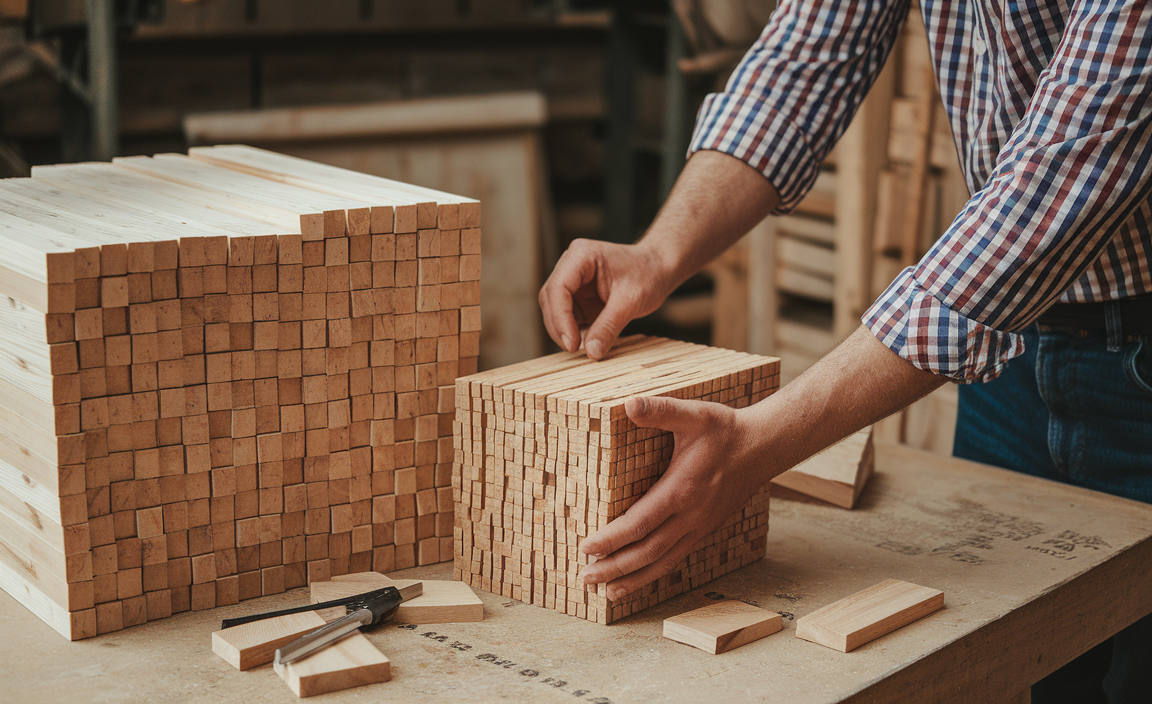
Calculating wood weight is simple and useful. First, know the type of wood, as each type has a different density. Measure the wood’s volume in cubic feet or inches. Then, multiply that by the wood’s density. Did you know that a cubic foot of oak weighs about 45 pounds? This method helps in projects, ensuring you know how much weight you handle. Remember, understanding wood weight can prevent surprises in your building tasks!
Understanding Wood Density
Definition of wood density and its significance in weight calculation.. Common density values for different types of wood.. Wood density is how heavy a piece of wood is for its size. It helps us figure out how much wood weighs.
Different woods have different densities, just like how some people are as light as feathers and others are like boulders! For example, balsa wood is super light, while oak is heavy and strong. Understanding these densities is important for building things, as we don’t want our projects to float away or break under pressure!
| Type of Wood | Density (lbs/cubic foot) |
|---|---|
| Balsa | 8 |
| Pine | 22 |
| Oak | 45 |
So, knowing the density helps us choose the right wood for our projects. It’s like picking the right shoes; you wouldn’t want to wear flip-flops to play basketball!
Tools Needed for Calculation
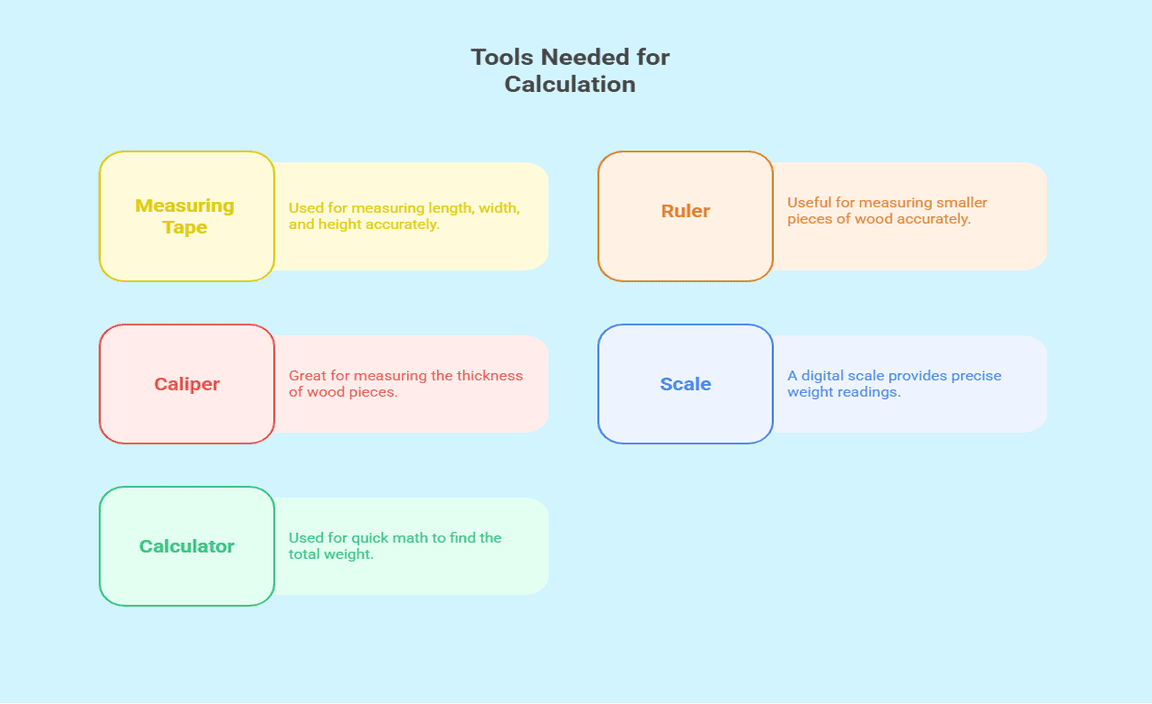
List of tools required for measuring wood dimensions.. Recommended scales and calculators for accurate weight measurement.. To measure wood dimensions and calculate its weight, you need some handy tools. Here’s a quick list:
- Measuring Tape: For getting accurate length, width, and height.
- Ruler: Useful for smaller pieces of wood.
- Caliper: Great for measuring thickness.
- Scale: A digital scale gives precise weight readings.
- Calculator: For quick math to find the total weight.
These tools ensure you measure correctly every time.
What tools do I need to measure wood?
You need a measuring tape, ruler, caliper, scale, and calculator to measure wood accurately.
Measuring Wood Dimensions
How to measure length, width, and thickness of wood pieces.. Importance of accurate measurements in weight calculation..
To measure wood accurately, you’ll need a tape measure for length and width, and a caliper for thickness. Start by laying your wood flat. Measure the length from one end to the other. Next, do the same for the width. Lastly, check the thickness by measuring the edge. Remember, accurate measurements are key for finding the wood’s weight. You don’t want to build a house of cards when you meant to build a castle! So grab your tools and get measuring!
| Dimension | How to Measure |
|---|---|
| Length | Use a tape measure from end to end |
| Width | Measure across the widest part |
| Thickness | Check from the edge with a caliper |
Using the Formula to Calculate Weight
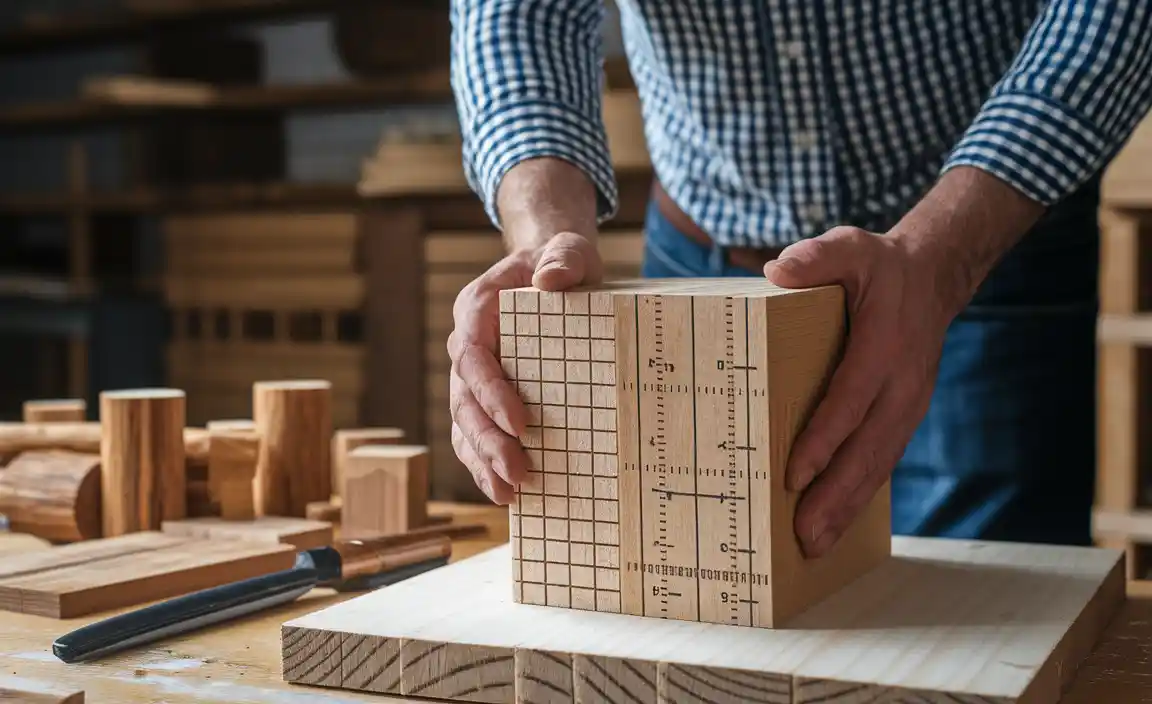
Presentation of the basic formula: Weight = Volume x Density.. Breakdown of volume calculation for various wood shapes..
To find the weight of wood, use this simple formula: Weight = Volume x Density. First, you need to calculate the volume of your wood. Different shapes have different volume calculations. Here are some examples:
- For a cube: Volume = side x side x side
- For a cylinder: Volume = π x radius² x height
- For a rectangular block: Volume = length x width x height
After finding the volume, multiply it by the wood’s density. This will give you the weight. Simple math can help you understand how heavy your wood is!
How Do You Find the Weight of Wood?
To find the weight of wood, measure the volume and know the density of the wood type. Then apply the formula: Weight = Volume x Density. This method is quick and easy!
Factors Affecting Wood Weight
Influence of moisture content on wood weight.. How treatments and finishes affect the overall weight..
Wood weight is affected by many factors. One important factor is moisture content. Wet wood is much heavier than dry wood. This happens because the wood absorbs water, adding extra weight. Treatments and finishes also matter. Chemicals and coatings can make wood denser. This adds weight too. So, the state of the wood and how it is treated really make a difference.
How Does Moisture Content Affect Wood Weight?
Moisture content greatly influences wood weight. It can lead to variations in weight from a few pounds to even more based on how much water the wood absorbs.
Factors about Treatments and Finishes:
- Coatings can trap moisture.
- Treatments affect wood’s density.
- Specific finishes can add significant weight.
Practical Examples and Calculations
Stepbystep calculation examples for different wood types.. Visual aids and diagrams to illustrate calculations..
Calculating wood weight can be fun! Imagine lifting a giant wooden elephant! Here’s how to easily figure it out. First, find the wood type. Each has a different weight. For example, oak is heavier than pine. Next, measure the dimensions: length, width, and height. Use the formula: Weight = Volume x Density. To help visualize, here’s a simple table:
| Wood Type | Density (lbs/ft³) | Weight of 1 Cubic Foot (lbs) |
|---|---|---|
| Pine | 25 | 25 |
| Oak | 45 | 45 |
| Maple | 38 | 38 |
By following these steps, you won’t need a weightlifting coach to figure out your wood’s weight. Remember, knowing the weight helps in projects and ensures you don’t build a treehouse that tips over!
Common Mistakes to Avoid
Highlight frequent errors in measuring and calculations.. Tips for ensuring accuracy in weight estimation..
Many people make common mistakes in measuring wood weight. One error is not accounting for moisture. Wet wood weighs more than dry wood. Another mistake is not using the right formulas. Always double-check your calculations. To improve accuracy:
- Use a scale for precise weight.
- Check for knots and irregular shapes.
- Measure in cubic feet or meters.
- Always know the wood type and its density.
By avoiding these errors, you can get better results when estimating wood weight.
Common Questions about Wood Weight Calculation
What is the best way to measure wood weight? The most accurate way is to use a scale. For rough estimates, calculate volume and multiply by density.
Applications of Wood Weight Calculation
Importance in woodworking and construction projects.. How it aids in logistics and shipping of wooden materials..
Knowing the weight of wood is super important for woodworking and construction projects. It helps builders use the right materials without making their structures as heavy as a brick. Think of it like packing your bag for a trip—too much weight, and you might end up in a comical struggle to carry it! Additionally, understanding wood weight helps with shipping. Companies save time and money when they know exactly how much wood they’re moving. This keeps everything smooth sailing, or at least smoother than a bumpy log ride!
| Application | Importance |
|---|---|
| Woodworking | Determines the right materials |
| Construction | Prevents overloading structures |
| Logistics | Aids in efficient shipping |
Conclusion
To calculate wood weight, measure its volume and know the wood’s density. Multiply these numbers for the total weight. We use this method to understand how much wood we’ll need for projects. You can practice these calculations at home or use online tools. For more tips, check out guides on woodworking! Happy building!
FAQs
What Is The Formula For Calculating The Weight Of A Specific Type Of Wood Based On Its Density And Volume?
To find the weight of a specific type of wood, we use a simple formula. First, you need to know the wood’s density and its volume. The formula is: Weight = Density × Volume. Just multiply the density by the volume, and you get the weight! This helps you understand how heavy the wood will be.
How Do Different Species Of Wood Affect The Overall Weight Of A Lumber Piece?
Different species of wood weigh different amounts. Some woods, like oak, are heavier, while others, like pine, are lighter. This affects how easy it is to carry and use them. When we choose wood, we need to think about its weight for our project. So, the type of wood you pick can make a big difference!
What Units Of Measurement Are Commonly Used When Calculating The Weight Of Wood?
When we talk about the weight of wood, we often use pounds (lbs) and kilograms (kg). Pounds are used in the United States, while kilograms are used in many other countries. Sometimes, we also mention board feet, which is a way to measure the volume of wood. This helps us know how much the wood weighs based on its size.
How Can Moisture Content In Wood Impact Its Overall Weight Calculation?
Moisture content means the water in the wood. When wood has more water, it weighs more. If wood is dry, it weighs less. So, when we measure the weight of wood, we need to think about how wet it is. More water means heavier wood, and less water means lighter wood.
What Tools Or Methods Can Be Used To Measure The Density Of Wood For Accurate Weight Calculations?
To measure the density of wood, you can use a few simple tools. First, you need a scale to weigh the wood. Then, measure the length, width, and height of the piece of wood. You can find the volume by multiplying those three numbers together. Finally, divide the weight by the volume to get the density!
Resource:
Wood Density Reference Chart: https://www.engineeringtoolbox.com/wood-density-d_40.html
Moisture Content in Wood Explained: https://www.wood-database.com/wood-articles/moisture-content-of-wood/
How to Use a Caliper for Measuring Wood: https://www.instructables.com/How-to-Use-a-Caliper/
Wood Volume Calculator (Online Tool): https://www.omnicalculator.com/construction/wood-volume
